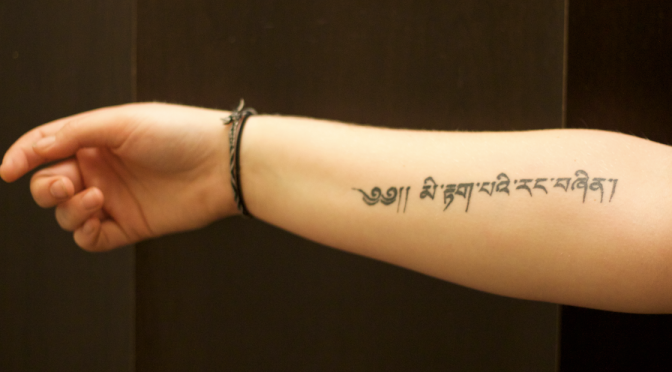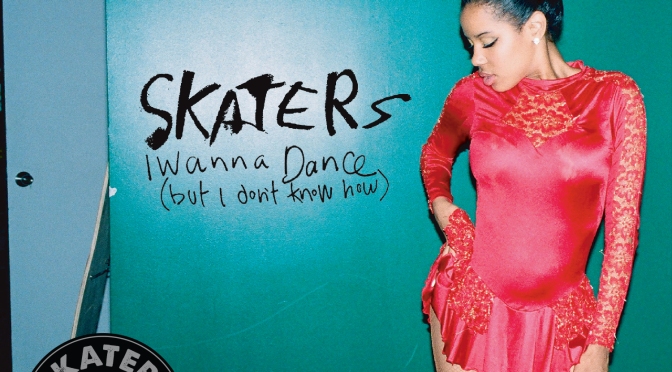Plasma punk band, SKATERS, hails from the wild streets of New York City with influences ranging from Los Angeles to Boston. Michael Cummings (singer/songwriter), Noah Rubin (drummer), and Joshua Hubbard (guitarist) may not be skaters now, but remain intrigued by the culture and its youthful rebellion. The trio recorded their first EP “Schemers” (2012) featuring five songs that scream post-punk influences with a spin of modern rock. This interesting clash makes the band fresh and shows they are bringing something new to the table. After releasing their EP, the band released two singles with stimulating music videos, “I Wanna Dance (But I Don’t Know How)” and “Armed.”
Before SKATERS perform a free show at UC Berkeley on Oct. 18, I got the chance to catch up with lead singer Michael Cummings and talk about “Breaking Bad” and his goals for the band — as well as its side project, YONKS.
Foghorn: So I heard you like “Breaking Bad.” Did you happen to watch the finale and if so, what did you think of it?
MC: We were actually filming a music video, and we stopped filming and drove into the city to our friend’s house to have a party. It was, hands down, probably the best episode of television ever! They really wrapped it up and tied all of the loose ends together.
Foghorn: How did you and Noah convince Joshua to move from England to Manhattan and start the N.Y.C. band now famously known as SKATERS?
MC: It was pretty random. We had met in Los Angeles and he said, “I think I might try to play in your band,” and I said “okay.” So then I moved to New York, and he said maybe he will come by in November. So on Oct. 31, he sends me a message saying, “my flight gets there at four tomorrow.” He ran on a plane and came to New York, and the next morning we booked three shows. We didn’t really anticipate it happening like that or so quickly.
Foghorn: What happened on the eve of July 19, 2013 in N.Y.C., and why was this significant to the band?
MC: It was my goal when I was a kid to play Bowery Ballroom headlining. Playing and headlining a show there was pretty amazing. We sold it out, and that was a bonus!
Foghorn: Do you have any specific goals for what venue or event you would like to play in the future?
MC: That’s funny because I don’t really know now because we would make these three-month plans. By this point, it’s “let’s sell out this room.” Then Bowery was our thing, you know? We thought we would sell out the Bowery eventually, then we did it! Now, I don’t know — where do we go again? Do we play the Bowery again? [Laughs]
Foghorn: You have a side project called YONKS. Can you tell me more about this?
MC: Yeah. It’s a zine, and you can only get it at our shows. We handpick all of these artists that are friends of ours, and we showcase their work in this magazine — and that’s called YONKS. YONKS is British slang for “a long time” — like ages, I haven’t seen you in YONKS or whatever. The zine started as a project because, you know, when you start a band, you have a lot of friends that help you with your art direction, photography, and all of the different aspects you need [in order] to have an operating band. We started this zine as a cool thing to bring artists together, so all of our friends from different parts of the city could meet each other and were all featured in the same zine. It really strengthened our community of friends.
Foghorn: What was it like recording your first debut album at Electric Lady?
MC: It was pretty amazing. It was a real studio. I have recorded in a lot of studios, but this is probably the most legit operation they have going on over there. You have interns to go get whatever you want whenever you want any time of night, you know? You want a pizza from the other side of town, and they will go get it. It just makes things super, super easy, and you can just focus on the record. That building is a cool, inspiring building because there is always a session going on — because there are so many studios. One night, we were recording across the hall from Usher and he’s singing from outside of our door. And we’re talking inside the studio and he is right outside. Just walking through the halls and saying “hi” to Yoko Ono and Arcade Fire — it’s inspiring. It makes it feel like you’re making a record that delivers a level of importance to your recording process.
Foghorn: Your music is described as: “non-traditional punk music; upbeat, weirdo punk with hooks but not pop hooks — with daggers, claws and bearings.” How does this translate into your live performances?
MC: I think it is kind of similar. We try to be as tight as we can. There is definitely an element of mayhem. Sometimes we get very visibly angry if a show is not run right, or if we are too drunk. You just never know what you are going to get. There is a level of spontaneity, which is good for the kind of music we play.
Foghorn: The music video for your first single, “Schemers,” can be said to be comparable to a 1980s acid trip. What was the inspiration for taking the video’s visual aesthetic in this direction?
MC: I grew up on MTV and since that has gone away, there have been two types of music videos that have been done — and they are both boring. One is just performance: a performance video where you just look at dudes playing along to their song. The other one is a narrative where you have to actually follow a character, and there is a big reveal at the end or something. It is more cinematic than it is a music video. One thing I really liked about old MTV music videos was when people didn’t really know what they were making them for except accompanying a song and entertaining. There was an element of psychedelic visual work that people were trying new things in music videos because they hadn’t been done — because music videos were new. I think that is something we all aesthetically really enjoy watching, and we think other people do too. We think other people are bored with how music videos are, you know?
Foghorn: The band decided to release the first EP “Schemers” for free. Did you expect the great response when you reached over 10,000 downloads?
MC: No. We kind of just put it up there to show our friends what we were working on, and it came so quick. Josh literally flew into New York, and we booked our shows. Then the next weekend, we flew into L.A. to mix the EP. I was just finishing it when he got there, so it was pretty unexpected that so many people ended up downloading it. But I guess that’s the Internet for you. If something is good enough and word of mouth spreads it, you know people check it out. It was free, so it was easy for people to get.
Foghorn: You are due for a full-length album soon. What can the fans expect to hear on this album?
MC: It is coming out on Feb. 24. They can expect an interesting, post-punk record. There is going to be a lot of sides to it: a lot of different kinds of songs on it, and it’s definitely not going to be what people are expecting in the best way possible.
Foghorn: Any last words for your fans that are coming to see your performance at UC Berkeley on Oct. 18?
MC: Go nuts, man; go crazy! Say hello to us; hang out with us. Have fun. It will be a great show!
Don’t forget to make your way to the free SKATERS show with Palma Violets on Oct. 18, 5 – 7 p.m., at Upper Sproul in UC Berkeley. For more information, visit: skatersnyc.com



